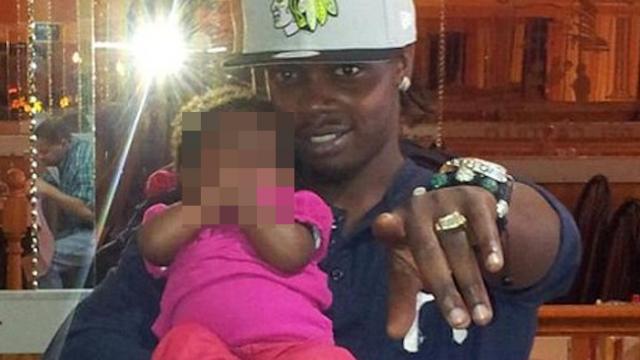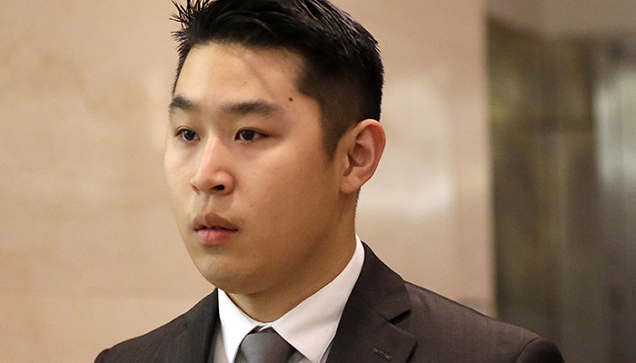
Last fall, Akai Gurley, 28, was visiting his girlfriend and their two-year-old daughter at the Pink Houses, a Brooklyn housing project. After leaving the apartment, he stepped into the unlit stairwell and a shot rang out from above, hitting him in the torso and ending his life. The fatal shot came from the service revolver of Officer Peter Liang, a rookie NYPD cop.
Officer Liang’s case is still winding its way through the courts, as are many of the 54 incidents of fatal police shootings over the last decade in which charges have been brought, according to a recent investigative report in the Washington Post. The cases were culled from newspaper and other media accounts by the Post and researchers from Bowling Green State University, working under criminologist and former cop Philip M. Stinson.
Providing a clear window into the biases within the U.S. justice system where fatal police shootings are prosecuted, the Post investigation also suggests there are perhaps thousands of other cases of fatal officer-involved shootings in which no charges were brought.
In Gurley’s case, the prosecution has charged Officer Liang with second degree manslaughter, saying he opened the door with his right shoulder and fired the gun in his left hand as he entered the stairwell. Liang and the NYPD claim it was “an accident,” but even if that was the case, the prosecution notes that “Liang ignored his training to hold his gun with his finger outside the trigger guard.”
Perhaps worse, even if the public is to believe the shooting was an accident, was the fact that instead of giving emergency medical care to Gurley and immediately calling for assistance, Liang and a second officer argued about what course to take and texted their union rep to get their stories straight. This occurred at the same time as other officers rushed to the scene following reports of shots fired.
The Post describes even worse cases of police misconduct. Of the 54 incidents examined, 21 resulted in no conviction, 19 are pending, three resulted in plea deals – and just 11 in convictions. In most of the cases that resulted in no conviction, officers claimed the victim seemed to be reaching for a gun, although in only one case was a gun actually found on the victim after the officer fired the fatal shots.
The Post’s analysis takes great pains to state the difficulty of knowing when and if race was a factor in the shootings – but the fact that more than 75% of the officers involved were white, and two-thirds of the victims were minorities (all but two were African-American) can lead observers to believe race indeed played a factor.
Statistically, the mentally ill are among the most likely to die at the hands of police. They make up half of all victims in police shootings, including the many more in which charges aren’t brought, according to an earlier report in Salon. One of the tragic cases detailed in the Post analysis is that of Keith Vidal of Boiling Springs, N.C.
An 18-year-old suffering from schizophrenia, Vidal had threatened his mother with a sharp object and was refusing his medication when she called 911. But rather than receiving help from authorities in dealing with his condition, Vidal wound up dead after a confrontation with police. The officer who shot him, Bryon Vance Vassey, has been charged with felony voluntary manslaughter and the case is still pending.
On the other side of the country, state trooper Ivan E. Lawyer was found not guilty by a Colorado jury for a fatal shooting that occurred in 2010 when the trooper, after kicking in the door of 31-year-old Jason Kemp’s home, claimed he thought the man’s silver bracelet was a gun and shot him in the chest where he sat. The reason for this aggressive approach? A neighbor had complained that "Kemp’s Jet Ski had fallen into his yard.”
One of the more bizarre stories covered at length in the Post’s analysis dealt with Officer Coleman Brackney of the Bella Vista Police Department in Arkansas, who shot 41-year-old James Ahern through his back windshield multiple times after a high speed car chase. Bradley claimed that Ahern’s reverse lights flashed and the officer feared he was going to be run over, provoking the fatal response. The story didn’t convince prosecutors, who claimed that tape from the officer’s dashboard cam showed his version of events to be untrue.
Regardless, Brackney was able to plead his case down to negligent homicide and, if he complies with the terms of his probation, he could eventually “request to have his record sealed and the criminal charge expunged.” In the meantime, rather than retiring from policing, he has been hired as Chief of Police in nearby Silver Springs.
On a positive note, the Post’s report revealed that almost 25% of the time, other officers stepped forward to make statements or give testimony when they felt the suspect was not a threat at the time of the shooting. While this isn't exactly a good record, it shows there are significant cracks in “the thin blue line."
In fact, cooperation from other officers, when it is forthcoming, can make or break cases for prosecutors. "Such testimony carries almost unequaled weight with judges and juries because police officers are considered highly credible eyewitnesses as well as experts in the proper use of force, according to prosecutors and defense attorneys,” the Post reported.
Another example of a high-speed chase that ended in fatalities is the still-pending case of Cleveland PD Officer Michael Brelo. In 2012, Timothy Russell and Marissa Williams were driving past police headquarters when their car back-fired. Officers on the scene assumed the sound came from shots being fired, and began a 62-car chase that ended 22 minutes later with Brelo allegedly jumping onto the hood of Russell and Williams's Chrysler Malibu and firing 15 shots into the windshield, killing both driver and passenger.
Although Brelo claims he feared for his life, neither Russell nor Williams were believed to be armed, according to at least two police radio broadcasts during the chase. Including Brelo’s shots, officers on the scene fired a total of 139 times, demonstrating what appears to be rage, more than fear, on the part of the police – an element that factors into many cases the Post describes.
The criminologist who headed up the Bowling Green University researchers, Philip M. Stinson, was quoted as saying that these shootings can often be called “acts of passion.”
“They (police) are used to giving commands and people obeying. They don’t like it when people don’t listen to them, and things can quickly become violent when people don’t follow their orders,” he told the paper.
3 WAYS TO SHOW YOUR SUPPORT
- Log in to post comments












